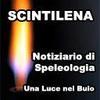Pollentia e i suoi antichi acquedotti. Piero Barale
Riassunto
Pollentia fu una illustre città della prima età imperiale. L’attuale Pollenzo è una frazione della città di Bra, nella provincia di Cuneo, e si trova sulle rive del fiume Tanaro non lontano dalla confluenza del fiume Stura. L’antica città è praticamente scomparsa ma alcuni tratti dell?antico contesto architettonico appaiono ancora evidenti e conservati nel sottosuolo.
È accertato che Pollentia disponeva di un regolare rifornimento idrico ed uno degli aspetti più affascinanti legato all?architettura dell’antico centro urbano è certamente quello rappresentato dagli acquedotti.
Le canalizzazioni che giungevano a Pollentia erano due, una da nord e l’altra da sud. Si può supporre che il condotto sotterraneo «meridionale» sia il tratto più antico, realizzato nel corso del I secolo a.C., l’acquedotto «settentrionale», di maggiori dimensioni che in prossimità della città correva a cielo aperto, parrebbe essere di età imperiale. Nonostante la frammentarietà dei dati si è cercato di eseguire un?analisi del sistema idrico di Pollentia, sia tramite le strutture accertate e definite sia con il supporto di osservazioni e indizi che possono servire a convalidare le ipotesi.
Pollentia and the ancient aqueducts
Abstract
Pollentia was an important city of the first Imperial Age. The current Pollenzo is a fraction of Bra, a town in the province of Cuneo, and it?s located on the banks of the Tanaro river, not far from the confluence of the Stura torrent. In the XVIII century some academic studied the ruins and through accurate observation, marked the beginning of the archeological research in Piedmont. Although the ancient city has virtually disappeared, some signs of the ancient architectonic context are still evident and preserved underground. In antiquity the installation and prosperity of an urban center was mostly conditioned by the presence of drinking water: in this settlement, surely inserted in the oppida strengthening and municipalization policy, it?s likely that the water has been one of the factors that favored the town development. It?s established that Pollentia had a regular water supply and one of the most fascinating aspects of the ancient city architecture is certainly represented by the aqueduct. Aqueducts in Pollentia were two. The ?southern? underground conduit is the oldest, built in the first century BC, when the geographical location of Pollentia and the probably contribution of latin citizenship in 89 BC helped to locate the center in the middle of the cities of greatest importance in meridional Piedmont. The ?northern? aqueduct, larger and probably built in Imperial Age, came to town in open air. Despite the fragmentary data, we tried to perform an analysis of Pollentia water system, through the structures established and defined and with the support of observations and indications which may serve to validate the assumptions.
Opera Ipogea è la Rivista Semestrale della Società Speleologica Italiana – Commissione Cavità Artificiali
Per informazioni, iscrizioni, servizio abbonamento, collaborazioni, consulta l’allegato:
http://www.scintilena.com/wp-content/uploads/2013/11/Promo-Opera-2013_02.pdf







